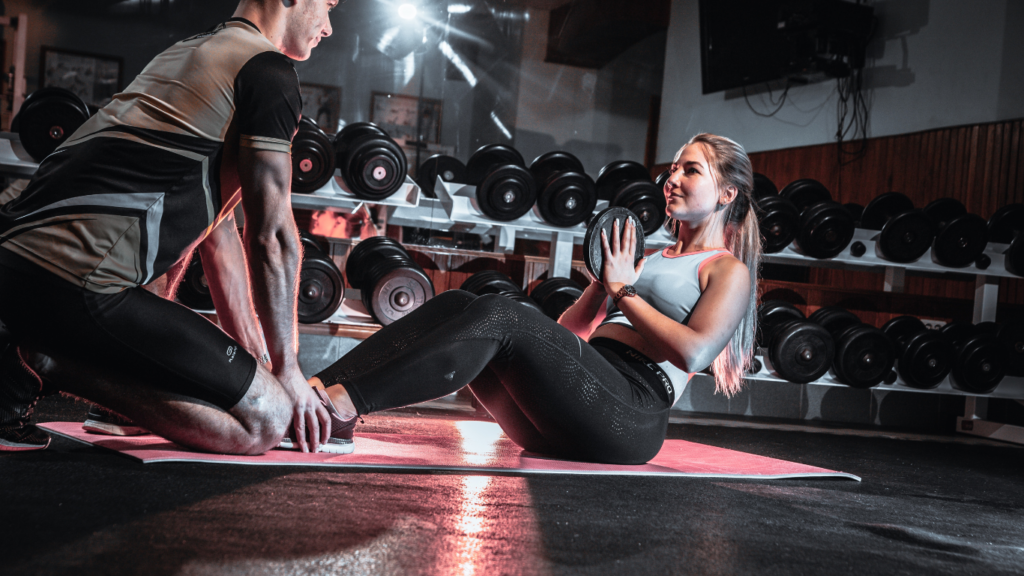As a fitness enthusiast, I’ve witnessed a shift towards more inclusive workout options that cater to individuals with diverse abilities. The fitness industry is evolving to embrace the concept of “Fitness for All,” where everyone, regardless of their physical limitations, can participate and thrive.
In this article, we’ll explore the latest trends in inclusive workouts designed to accommodate varying abilities and promote overall well-being. From adaptive yoga classes to specialized strength training programs, the landscape of fitness is becoming more accessible and welcoming to individuals with different needs.
As someone passionate about promoting health and fitness for all, I’m excited to delve into the innovative approaches and strategies that are revolutionizing the way we think about working out. Join me on this journey as we discover how inclusive workouts are empowering individuals of all abilities to lead healthier, happier lives.
Understanding Inclusive Fitness
Exploring the realm of inclusive fitness opens up a world of opportunities for individuals with varying abilities to engage in physical activities tailored to their needs. It’s essential to grasp the principles behind inclusive fitness to create a welcoming and supportive environment for everyone.
Initiatives focusing on inclusive fitness involve adapting exercises, equipment, and facilities to accommodate individuals with different abilities. Understanding inclusive fitness involves recognizing the diverse requirements of participants and customizing workouts to ensure they are accessible to all.
This approach emphasizes inclusivity, ensuring that individuals with disabilities or limitations can participate fully in fitness programs. By incorporating modifications and adjustments, trainers and instructors can create a safe and supportive space that promotes the well-being of every individual.
Inclusive fitness goes beyond physical adaptations; it encompasses providing adequate support, encouragement, and understanding to create a positive experience for all participants. Embracing inclusivity in fitness programs fosters a sense of community and empowerment among individuals with diverse abilities, encouraging them to pursue their fitness goals with confidence and enthusiasm.
It’s about creating an environment where everyone feels valued and respected, regardless of their capabilities. By understanding and implementing inclusive fitness practices, we can foster a culture of diversity and inclusivity within the fitness industry.
It’s a step towards ensuring that fitness is truly accessible to all, promoting not only physical health but also mental well-being and self-confidence. Inclusive fitness is a journey of empathy, understanding, and unity, where every individual is welcomed and supported on their path to a healthier lifestyle.
Benefits of Inclusive Workouts
Inclusive workouts offer a range of benefits that contribute to both physical health and mental well-being. Let’s explore the advantages in more detail:
Physical Benefits
Enhanced flexibility, improved cardiovascular health, strengthened muscles, and increased endurance are some of the physical benefits individuals can experience through inclusive workouts. These workouts cater to various abilities, helping participants improve their overall physical fitness levels. Additionally, inclusive exercises can aid in weight management and balance improvement, leading to enhanced mobility and reduced risk of injuries.
Psychological Benefits
Participating in inclusive workouts can have a positive impact on mental health by reducing stress, anxiety, and depression symptoms. Feeling included and supported in a fitness program can boost self-esteem and confidence.
Moreover, the social aspect of inclusive workouts fosters a sense of belonging and camaraderie, promoting overall well-being and mental resilience. Engaging in activities tailored to individual abilities can also enhance mood and provide a sense of accomplishment, leading to a more positive outlook on fitness and life in general.
Trends in Inclusive Workouts
- Adaptive Equipment: The use of adaptive equipment in inclusive workouts ensures that individuals with diverse physical abilities can participate in exercises tailored to their needs. This equipment includes modifications such as accessible exercise machines, adaptive weights, and specialized tools designed to enhance comfort and effectiveness during workouts.
-
Personalized Training Programs: Personalized training programs play a crucial role in inclusive fitness by offering customized workout plans that accommodate individual abilities and goals. These programs consider specific needs and limitations, ensuring that each participant can engage in exercises that are both challenging and achievable, promoting overall fitness and well-being.
Adaptive Equipment
Inclusive fitness trends emphasize the integration of adaptive equipment to facilitate diverse workouts. These specialized tools, such as adjustable benches, resistance bands, and balance aids, ensure that individuals with varying abilities can engage in physical activities safely and effectively.
By incorporating adaptive equipment, fitness programs can be tailored to suit the specific needs and capabilities of each participant, promoting inclusivity and empowerment within the fitness community.
Accessible Facilities
The rising trend in inclusive workouts underscores the significance of accessible facilities in promoting diversity and inclusivity. Accessible facilities are designed to accommodate individuals with disabilities or limitations, featuring amenities such as ramps, elevators, wide doorways, and designated parking spaces.
By creating a welcoming and barrier-free environment, fitness facilities can ensure that all individuals have equal opportunities to participate in physical activities, fostering a sense of belonging and community among participants of all abilities.
Personalized Training Programs
Inclusive fitness trends highlight the importance of personalized training programs tailored to individual needs and goals. These programs are designed to accommodate varying abilities, preferences, and fitness levels, offering customized workout routines, modifications, and progress tracking.
By providing personalized training programs, fitness professionals can empower individuals to achieve their fitness objectives while considering their unique requirements, thus promoting inclusivity, engagement, and overall well-being in the fitness community.
Challenges and Opportunities
Exploring inclusive fitness brings to light certain challenges and opportunities that shape the landscape of the fitness industry. Adapting workouts to cater to diverse abilities requires creativity, innovation, and a deep understanding of individual needs.
It’s crucial to address barriers that may hinder full participation and ensure that inclusive workouts are not only accessible but also engaging and effective for all individuals. One of the key challenges in promoting inclusive fitness is the lack of awareness and education among fitness professionals and the general public.
Without proper knowledge and training, it can be challenging to create truly inclusive environments that meet the needs of individuals with different abilities. Overcoming this challenge requires ongoing education, training, and collaboration within the fitness community to drive awareness and advocate for inclusive practices.
Another significant challenge is the availability of specialized equipment and facilities to support inclusive workouts. While adaptive equipment and accessible facilities are essential for accommodating diverse abilities, not all fitness centers or studios are equipped to provide such resources.
This presents an opportunity for the fitness industry to invest in creating more inclusive spaces and expanding access to adaptive equipment, thereby opening doors for individuals of all abilities to participate in fitness programs. Furthermore, fostering a supportive and inclusive community within fitness settings is crucial for overcoming social barriers and promoting a sense of belonging among individuals with diverse abilities.
Creating a culture of acceptance, respect, and understanding can help break down stigmas associated with disabilities and encourage greater participation in inclusive workouts. Collaboration among fitness professionals, community organizations, and individuals with varying abilities is key to building a welcoming and empowering fitness community that embraces diversity and promotes well-being for all.


 Dawnny Armstrongster, the visionary founder of Toe Back Fitness, is a passionate advocate for health and wellness, driven by a mission to empower individuals to lead active, balanced lives. With a deep understanding of fitness and injury prevention, Armstrongster has cultivated a platform that merges expert insights with practical advice, making fitness accessible to people at all levels. Her commitment to promoting sustainable lifestyle habits and safe workout practices reflects her dedication to long-term well-being. Under her leadership, Toe Back Fitness has become a trusted resource for those seeking to enhance their physical health, choose the right gear, and build routines that align with their fitness goals.
Dawnny Armstrongster, the visionary founder of Toe Back Fitness, is a passionate advocate for health and wellness, driven by a mission to empower individuals to lead active, balanced lives. With a deep understanding of fitness and injury prevention, Armstrongster has cultivated a platform that merges expert insights with practical advice, making fitness accessible to people at all levels. Her commitment to promoting sustainable lifestyle habits and safe workout practices reflects her dedication to long-term well-being. Under her leadership, Toe Back Fitness has become a trusted resource for those seeking to enhance their physical health, choose the right gear, and build routines that align with their fitness goals.